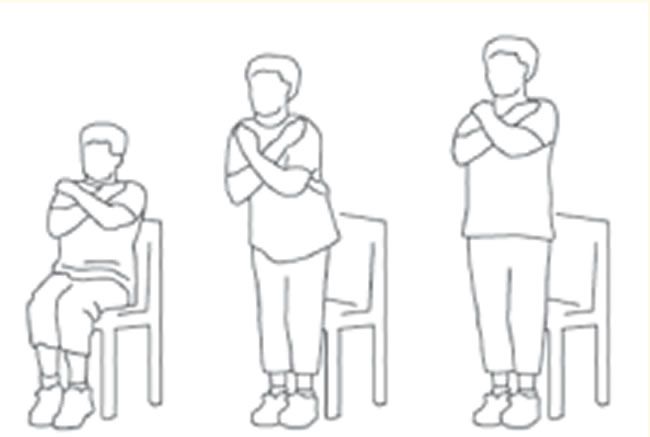Getting more magnesium might help you maintain mobility as you age. A new Italian randomized trial reports that daily supplementation with 300 milligrams of magnesium improved physical performance in older women. Among the benefits was a faster gait speed-a key factor in diagnosing sarcopenia, the frailty associated with loss of lean muscle mass in aging.
Although there is substantial scientific evidence highlighting the health benefits of consuming adequate amounts of magnesium, this mineral is really a forgotten one in the nutrition arena, says Nicola M. McKeown, PhD, an associate professor at Tufts Friedman School. Tufts researchers have linked higher magnesium intake to benefits including reduced coronary-artery calcification and lower risk of progression from prediabetes to type 2 diabetes (see the April 2014 newsletter).
More than 300 different biochemical reactions in the body depend on adequate levels of magnesium. The mineral also plays a key role in bone health, apparently in part by regulating how the body uses calcium and the hormones that regulate calcium.
Despite the importance of magnesium, its estimated that 70% to 80% of US adults fail to get the recommended intake. (The RDA for magnesium for adults ages 31-plus is 420 milligrams for men and 320 milligrams for women.) This shortfall is because most Americans are consuming only moderately rich sources of magnesium, such as milk, coffee and bananas, says McKeown. The benefit of incorporating magnesium-rich foods (see box) is that they also deliver a host of other nutrients, phytochemicals and dietary fiber.
FIRING UP FITNESS: In the latest study, published in the American Journal of Clinical Nutrition, researchers tested the effect of a magnesium supplement on measures of physical performance in 139 healthy women, average age 71.5, attending a mild fitness program. They randomly assigned 62 women to a daily magnesium supplement, while the rest received a placebo. A standard series of tests, the Short Physical Performance Battery (SPPB), was used to assess physical performance at the studys start and after 12 weeks.
Initially, the tests showed no difference in scores between the two groups. After 12 weeks, however, the women receiving extra magnesium scored significantly better overall and on a chair-stand test (see box) and in walking speed. Women who initially had intakes of magnesium below recommended levels (i.e. 320 milligrams/day) saw the greatest benefit.
The improvement in gait speed was substantial: the treated group had a mean improvement of about 12 meters per minute [almost 40 feet per minute] vis-a-vis the baseline, researchers commented. Like the improvement in total score, this finding is important in clinical terms, because gait speed is the only item in the SPPB that can be used as a single variable for diagnosing sarcopenia, because it is an independent predictor of adverse health events.
ARE YOU AT RISK?: Older people are at greater risk of magnesium deficiency, in part because they tend to consume less magnesium from food (see box). Aging also tends to be associated with a decreased ability to absorb the magnesium from the healthy foods you do eat, while the loss of magnesium through the kidneys may increase. Older people are also more likely to take medications that can interact with magnesium, according to the National Institutes of Health, such as:
-Diuretics (Lasix, Bumex, Edecrin and hydrochlorothiazide)
-Antibiotics (Gentamicin and Amphotericin)
-Cancer chemotherapy medication (Cisplatin)
Long-term use of proton-pump inhibitor (PPI) medications, which reduce stomach acid to treat conditions such as gastroesophageal reflux disease and ulcers, can also block the bodys absorption of magnesium and lead to deficiency. The US Food and Drug Administration (FDA) has specifically cautioned about prescription PPIs used for longer than one year. Over-the-counter PPIs are not thought to lower magnesium levels if used as directed for short durations.
Other people at higher risk of magnesium deficiency include those with chronic malabsorption conditions such as Crohns disease, poorly controlled diabetes and alcoholism.

The Short Physical Performance Battery includes a Repeated Chair Stands test, which simply counts how long it takes you to stand up straight from a chair five times, as quickly as you can, keeping your arms folded at your chest. An excellent score is under 11.1 seconds, good is 11.2-13.6 seconds, fair is 13.7-16.6 seconds, and poor is slower than 16.6 seconds or being unable to complete five stands.
Most people can get enough magnesium by eating a healthy diet with a variety of foods. Here are some key grocery-shopping tips to keep in mind:
-Foods high in magnesium include beans, peas, nuts and seeds.
-The green color of leafy greens such as spinach indicates a good source of magnesium, which is a component of the chlorophyll molecule that gives green plants their color.
-Choose whole grains when buying bread, pasta or cereal, because the process of refining grains such as wheat strips away the magnesium- rich germ and bran.
-Other good sources of magnesium include soy milk, low-fat dairy products, bananas, avocados and fish.
























